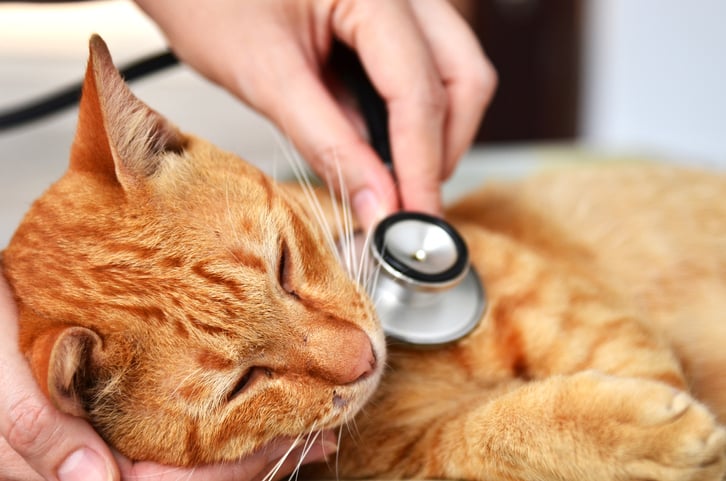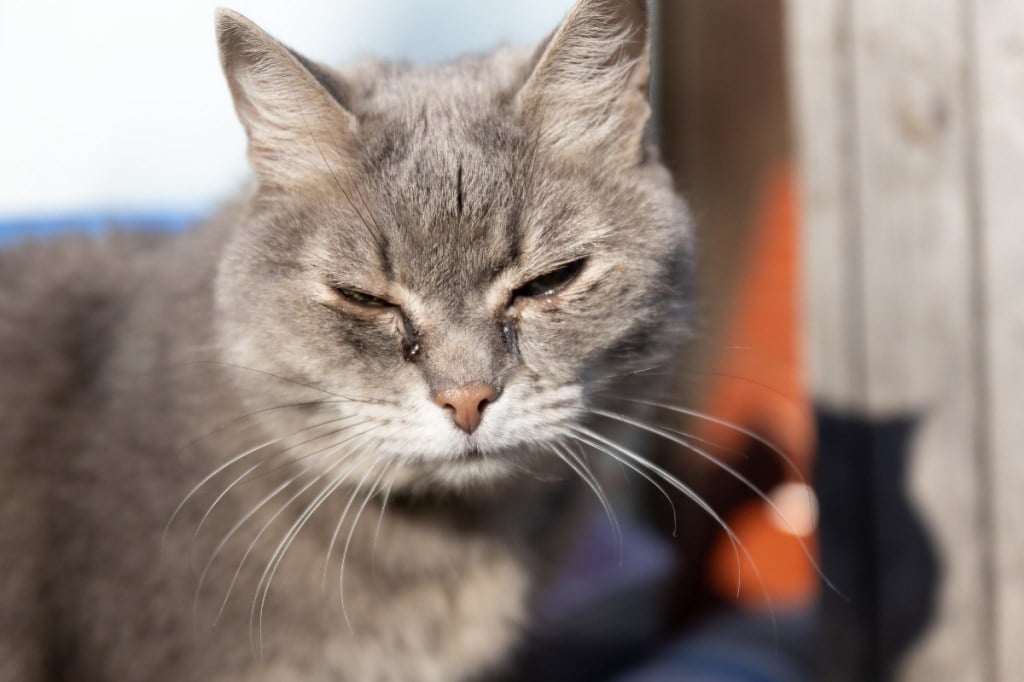Table of Contents
One of the challenges of veterinary medicine, and pet ownership, is deciphering what an animal’s body is saying to us. Because our pets can’t use words to tell us what’s wrong, we have to ‘read’ their body language to figure out what’s going on.
Understanding an animal’s body language can be especially challenging when it comes to pain. Wild animals disguise their pain and weaknesses to avoid being an easy mark for predators or enemies. Although our cats are not fending off enemies, their instinct to hide pain doesn’t go away, making it difficult for us to know when they’re hurting.
Untreated and unmanaged pain has major consequences beyond discomfort. Pain can affect the entire body and reduce a cat’s quality of life. Because a painful cat is an unhappy cat, cat parents can also experience the effects of their cat’s pain, such as social isolation and the occasional hiss or bite.
If you’re a cat parent, take some time to understand what causes pain in cats, what pain looks like in cats, and how this pain can be treated.
Causes of Pain in Cats
A wide range of conditions, listed below, can cause pain in cats:
- Cancer
- Surgery
- Trauma
- Arthritis
- Oral disease
- Ear infection
- Eye disease (e.g., ulcers)
- Bladder or kidney stones
- Gastrointestinal tract obstruction
- Inflammation of various organs (pancreas, bladder, intestines, stomach)
The Appearance of Pain in Cats
Cats are masters at disguising their pain. Your cat will do her best to hide her pain from you, so keep a close eye on her body language to detect when she isn’t acting like herself.
Symptoms of pain in cats can be subtle, so pay close to attention to the following changes in your cat’s body language:
- Purring
- Squinted eyes
- Social isolation
- Eating and drinking less
- Less frequent grooming
- Rapid, shallow breathing
- Reduced physical activity
- Inability to use the litterbox
- Vocalizing (howling, moaning)
- Aggression (biting, scratching, hissing)
- Reluctance to be touched or picked up
All of these symptoms are noticeable from a distance. If you think your cat is in pain, be very cautious about actually touching her. Even the sweetest and cuddliest cat can lash out when in pain. It is best to leave the close examination to your veterinarian.
When you take your cat to your veterinarian, be prepared to give a detailed history of your cat’s pain, including when you first noticed pain symptoms and which symptoms you observed. Your veterinarian will perform a physical examination and other diagnostic tests (blood work, x-rays, urinalysis) to assess your cat’s overall health and pinpoint the pain’s cause and location.
Unlike in human medicine, pain scales to measure pain in animals are not widely available. Fortunately, there is one pain scale, called the Feline Musculoskeletal Pain Index, which assesses pain in cats with chronic musculoskeletal disease; this disease affects the bones, tendons, ligaments, and nerves.
Treating Pain in Cats
A cat who is in pain needs prompt and effective pain relief. Once the source of the pain is identified, treating or managing that underlying cause can significantly reduce a cat’s pain. For example, if a cat has bladder stones that are causing painful urination, surgically removing those stones helps relieve that pain. Removal of a fractured tooth can significantly reduce oral pain.
In addition to treating the underlying cause, pain medication can be given to reduce and control the pain. Frequently, pain medications called nonsteroidal anti-inflammatory drugs are prescribed. Opioids are typically reserved for severe pain, such as surgical pain or arthritis. Steroids can also be used, but should be used with caution because they can have adverse long-term health effects. Do not medicate your cat’s pain on your own; use only what your veterinarian prescribes and follow prescription instructions carefully.
Closing Thoughts
Like people, cats can experience pain for numerous reasons. Regardless of the reason, that pain must be treated promptly and effectively. If your cat is showing signs of pain, such as those listed above, contact your veterinarian so your cat can receive much-needed pain relief.
The content is not intended to be a substitute for professional veterinarian advice, diagnosis, or treatment. Always seek the advice of your veterinarian or other qualified health provider with any questions you may have regarding a medical diagnosis, condition, or treatment options.
If you want to thank your pet for always being there and protect them from the unexpected, consider enrolling in pet insurance. With Healthy Paws, , you can save up to 90% on vet bills which means saying “yes” to life-saving treatments, no matter the cost. If you’re not a part of our family, start by getting a free quote.






